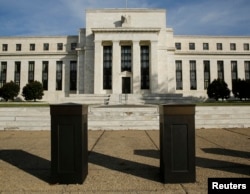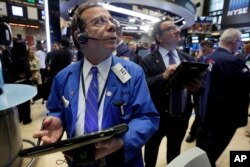Markets closed a very busy week of earnings and news, highlighted by six Mergers and Acquisitions transactions on Thursday, the Federal Reserve and Bank of Japan, weak GDP and disappointing quarterly results from iPhone maker, Apple. The S&P 500 and Dow Jones Industrial Average lost April gains and the NASDAQ was down for seven consecutive sessions.
The yen had its best week since 2008, which in turn hit stocks and the U.S. dollar on Thursday as the Bank of Japan (BoJ) held monetary policy steady this week rather than adding additional stimulus. This led traders to believe that perhaps the BoJ might be finished adding fresh stimulus to the economy. Recall “accommodative” central bank policy has been the main driver of supporting asset prices through this multi-year bull run in the market.
Meanwhile, the Federal Reserve kept interest rates unchanged, and while the April communique was essentially a copy-and-paste from March, the Fed eliminated the term “global risk,” which led investors to speculate that the Fed is adopting a more “hawkish” posture.
Sector rotation remains a dominant theme as investors continued to move out of the healthcare and technology sectors and into energy, materials and utilities.
“I think the next stage of economic development stimulus will be infrastructure spending,” Phil Davis of PhilStockWorld.com said. “Because of this, I am really excited about the materials sector and there are a lot of great plays there. Just like the energy sector, these names have been beaten down for too long.”
In the commodity complex, gold and crude oil surged to 2016 highs. Brent crude saw its biggest monthly rise in seven years on Friday as the dollar fell, and U.S. production slowed down. Because of the rebound in commodities, Russia was the best performing market in April due to its commodity dependency.
Trading week ahead
Monday kicks off the first trading week of May 2016. Besides Federal Reserve interest rate decision meetings, perhaps the most important piece of economic data is the Non-Farm Payrolls report that gets released the first Friday of every month.
The employment data give the most comprehensive report on how many people are looking for jobs, how many have them, what they're getting paid and how many hours they are working.
These numbers are the best way to gauge the current state, as well as the future direction, of the economy. Most importantly, it is a major factor the Federal Reserve considers when evaluating economic policy, including interest rate increases and decreases.
Earnings season over the hump
Sixty-two percent of the companies in the S&P 500 have reported earnings with the financial, tech and industrial sectors largely out of the way. For the week of May 2, consumer, energy, cable and travel stocks are the most represented areas of the S&P 500. Three of the most heavily traded names on the calendar include Fitbit, Tesla and Alibaba.
Sell in May and go away
There is a well-known Wall Street trading adage that says, “Sell in May and Go Away.” It is a strategy where an investor sells equity holdings in May and re-enters the market in November to avoid the typically volatile, low-volume May-October period. But market timing and seasonal strategies do not always work out, and results may be very different in practice.
“Calendar anecdotes do not have a great track record of working. Last two years the Santa Claus Rally fizzled just when the markets were 'supposed' to shoot higher,” Bob Lang, Founder of Explosive Options in San Diego, California says.
“Timing the market, however, is a tough job, and while the historical statistics show this to actually be the right thing to do, every year is different, especially when the Fed and other central bankers control the action. Yet, the last couple of years the sell in May strategy did not work well. Hence, trying to time the market using only these tools is challenging. Further, there is the summer rally that often ensues in July — exit the market and you'll wind up missing the boat,” he added.
















